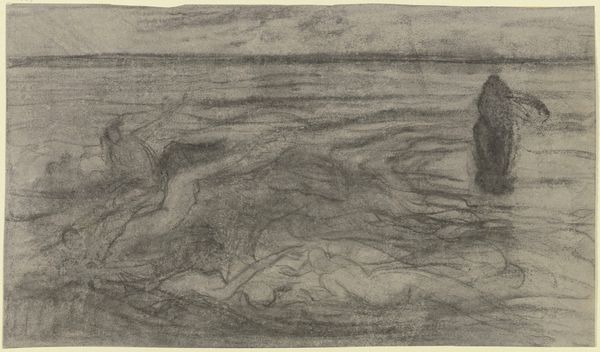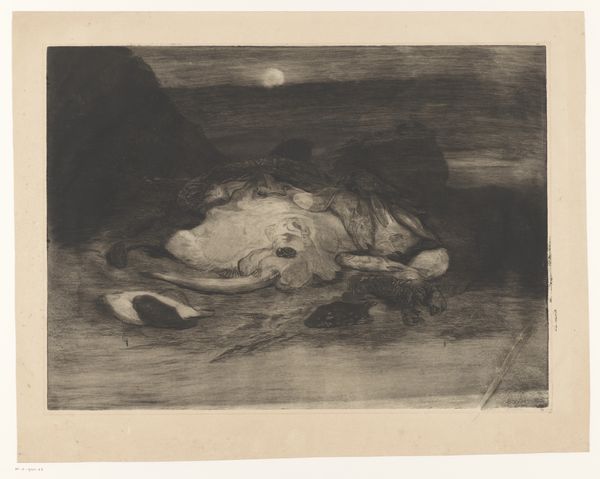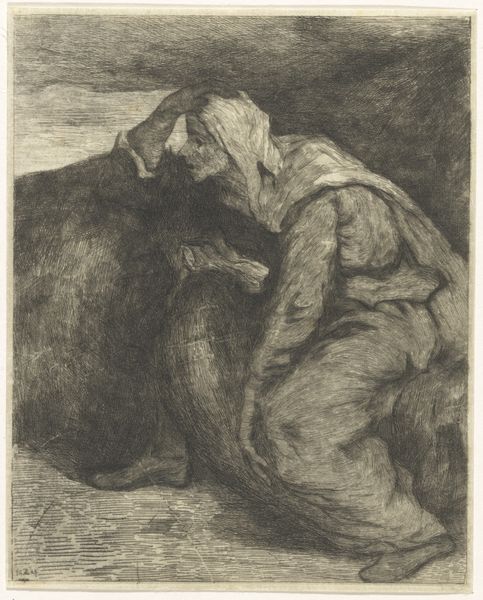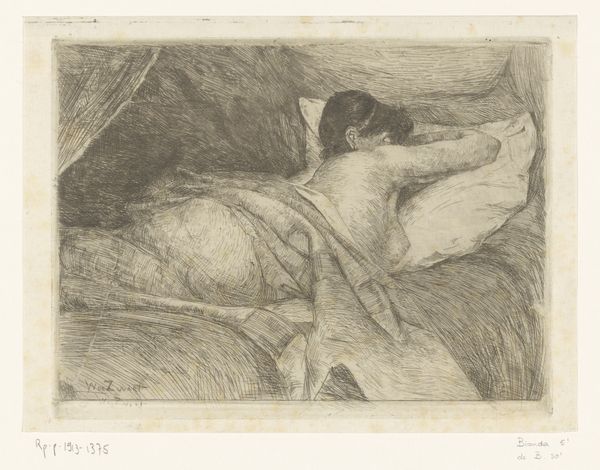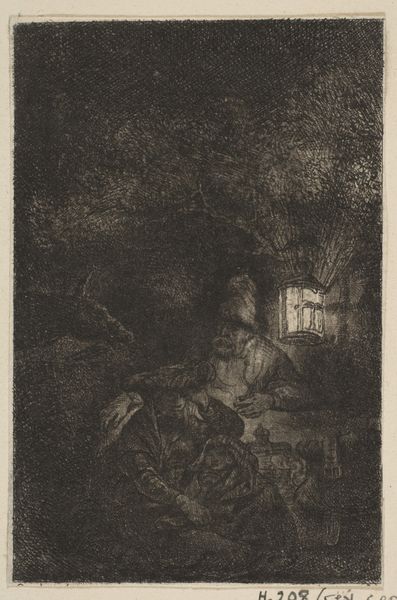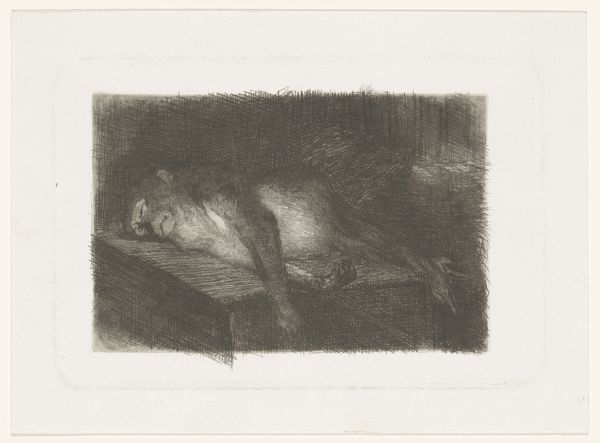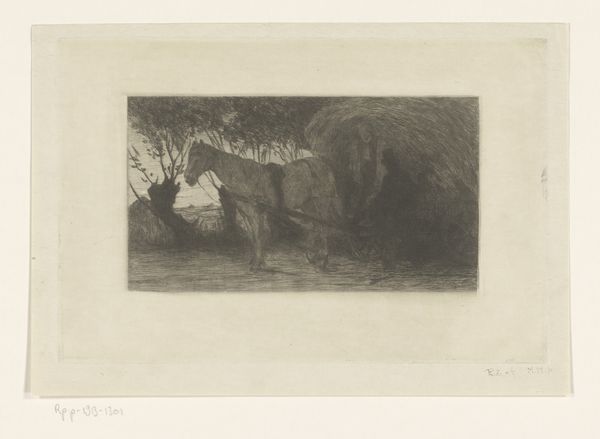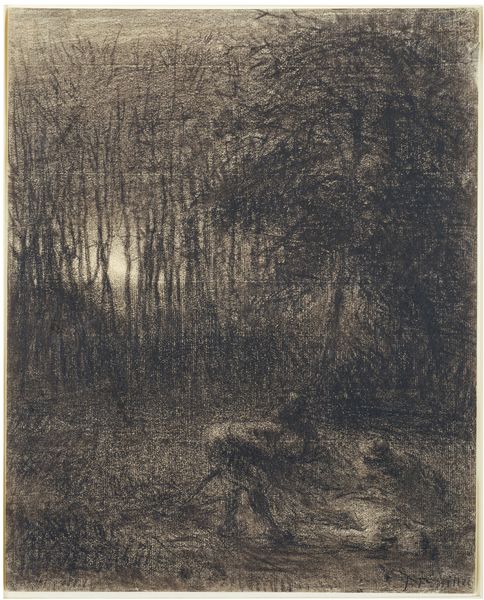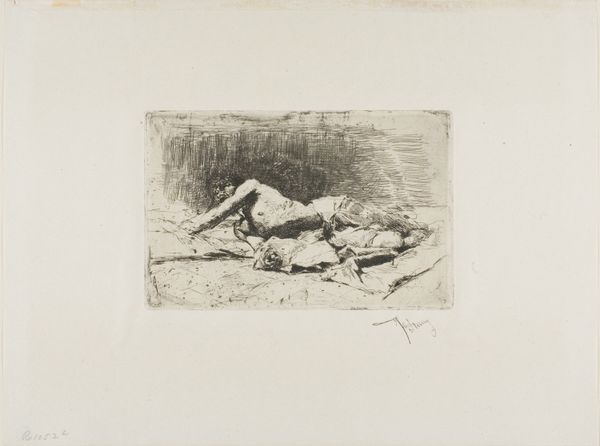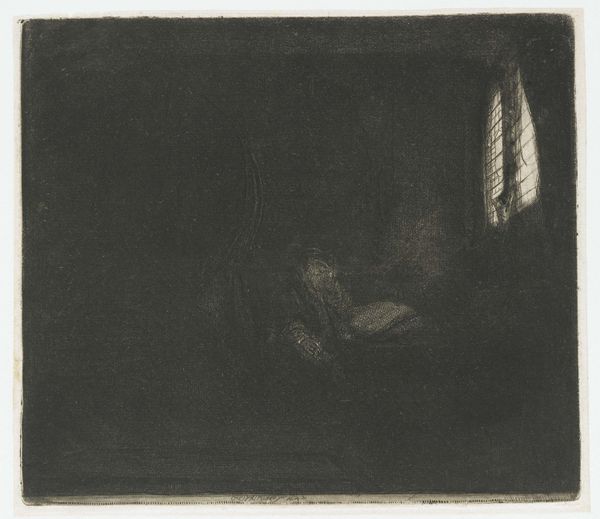
Dimensions: plate: 14.2 x 16.4 cm (5 9/16 x 6 7/16 in.) sheet: 26.7 x 36.2 cm (10 1/2 x 14 1/4 in.)
Copyright: National Gallery of Art: CC0 1.0
Curator: Right, let's discuss this etching, "Le Chaos," or "Chaos" created in 1863 by Jules Ferdinand Jacquemart. Quite a striking piece. Editor: Striking indeed! My initial impression is one of intense drama and foreboding. The dark tones and swirling lines create a real sense of turmoil and almost physical discomfort. Curator: It’s interesting to think about this piece within the context of Romanticism and the ongoing Industrial Revolution. Jacquemart was a master of etching, a process involving painstaking labor to transfer an image onto a metal plate and create the printed image. Editor: Yes, you can see the process evident in the density of the lines. I find myself thinking about how the act of mass production—printing multiple copies—intersects with this romantic ideal of a sublime landscape teetering on the edge. Consider the relationship between that level of intense labour and the concept of mass consumption within that time. Curator: Exactly. The choice of etching allows for detailed figuration alongside this dramatic chaos of the landscape. This contrasts with the smoother finishes often valued in academic painting. How did the labor and cost of production potentially affect its reception or audience? Editor: The distribution of such prints meant art became more accessible, but it also inserted itself into a different kind of visual culture - less the curated gallery and more the popular imagination, and often fueled by political satire and social commentary. The subject matter is fitting too; consider the rise of industry as its own form of destructive chaos. Curator: That resonates. And how museums then collect and present such works also shapes meaning. This engraving challenges distinctions between art and industrial object through its creation. The final print is only possible via that lengthy manual process. Editor: Well, engaging with “Le Chaos” through the lens of the materials and societal shifts of the 19th century, certainly gives us much to think about beyond the initial impact. Curator: I agree; understanding its historical placement enhances its narrative impact immensely and gives us insights to apply in current dialogues.
Comments
No comments
Be the first to comment and join the conversation on the ultimate creative platform.
